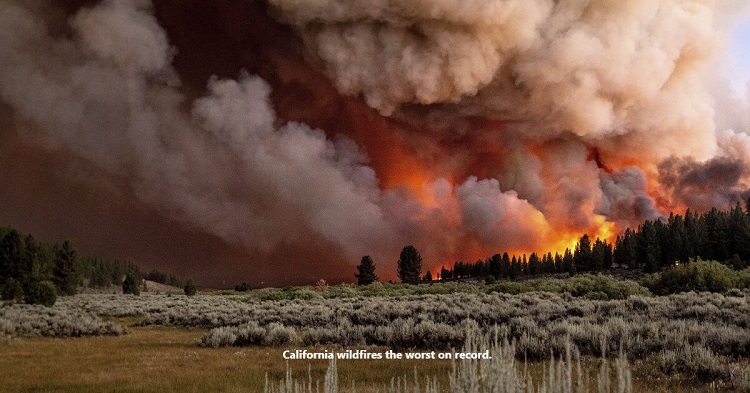
Under the background of global warming, exposure to wildfire is a growing public health concern worldwide.
Wildfires are posing a growing danger, particularly in the US and Canada in North America, and in the Mediterranean region in Europe. Parts of China and many other countries have also experienced more intense wildfires. Wildfire events in southwestern China have resulted in catastrophic loss of property and human life.
China’s CGTN America recently shared a video in which climate change experts warn that existing environmental regulations are inadequate to combat the increasing unpredictability of these blazes. In the linked video CGTN journalist Poppie Mphuthing provides insight into this pressing issue.
Research by a team of scientists based in Chengdu, Sichuan Province, recently examined three key elements of the risk of wildfire: hazard, vulnerability, and disaster prevention/mitigation capacity.
The scientists pointed out that in southwestern China, frequency, severity, and extent of wildfire events have increased with the warming and drying trends over this region. Population growth and expansion of inhabited areas also amplify the risks and vulnerabilities to wildfires.
During 2004–2020, the total burnt areas in the high-wildfire frequency region of southwestern China increased at a rate of nearly 2 km2/year, while the annual period of wildfire, referred to as “fire weather season,” extends, with an earlier beginning date and a delayed ending date of wildfire events. Growing risks and vulnerabilities to wildfire result in unprecedented damage and public health problems in both the southwestern region and the whole of China.
As the most variable and most prominent drivers of regional wildfires, warmer and dryer weather conditions have led to more severe fires in recent years. Since the 1970s, the temperature in southwestern China has been rising at the rate of 0.1°C–0.3°C per decade, and high-latitude areas have become warmer. Precipitation reduces at the rate of 9.4 mm per decade, with an increase in maximum continuous rain-free days, and related humidity decreases at the rate of 0.4% per decade, especially after 2010. The increase in the number of climate extremes, like heat waves and aridity, also affect wildfire frequency and severity.
Sources:
- CGTN America, Mar 8, 2024. ‘The growing menace of wildfires’. https://youtu.be/1zqZA9P_DB4.
- Frontiers of Environmental Science, Vol 11, April 2023. ‘Wildfire risks under a changing climate: Synthesized assessments of wildfire risks over southwestern China’. https://www.frontiersin.org/articles/10.3389/fenvs.2023.1137372/full